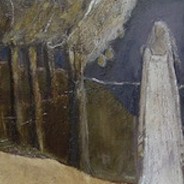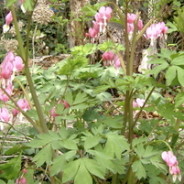Writing and Healing Idea #33: Imagining Refuge
Imagine for a moment that you are at a point in the arc of healing when momentum is carrying you forward. There are positive signs, whatever those might be. There’s a feeling of hope. Of possibility. Of forward movement. And then imagine that just as you are beginning to consider it’s possible—healing is possible—imagine that you receive news of a reversal. Perhaps the reversal is felt in your body—pain, as bad as before, or worse. The fatigue has returned, and you’re mired in it. Or perhaps the reversal comes by way of a lab test or an x-ray. The tumor has grown. Or perhaps you encounter a rejection of some sort. Perhaps you are discouraged by the violence and heartache in the world—- Or perhaps you simply have one of those no-good awful terrible hopeless days. Perhaps it’s raining, hard, and you find yourself without an umbrella, the car parked another three blocks away, and maybe you’re carrying a paper bag, filled with groceries, and it’s wet, it breaks, the contents spilling down the sidewalk. . . . Imagine now—at this very moment—in the wake of a sharp, and potentially devastating reversal—imagine that a figure appears. Perhaps an old woman? She has a kindness about her, and, also, she’s been through some things, she seems to know things—there’s something about her eyes. She can see, for one thing, the obvious—that you are cold and wet and tired. But she can also see that you have come to an abyss. A place of frustration. A dashing of hope. She knows that this is a particularly difficult juncture for you. And she also knows that the first step out needs to be of the most basic kind. She invites you to come back with her to her cottage. She leads you back, ushers you inside. She shows you where you can take a hot bath. She lays out towels. A clean robe. When you come out of the bath she’s laid a place at the table for you—a bowl of soup, a basket of bread, a pitcher of water. You eat and drink, and, after you have done so, she shows you to a bedroom with a clean soft bed. You sleep and sleep, and she lets you sleep. When you wake you find her out in the kitchen. She offers you a cup of tea, or perhaps a mug of coffee. She asks you to sit at the table. And it’s only then, after you are warm and fed and rested, that she asks you to tell her all about it. About all that has happened and what your hopes were at the beginning and how, at least in some ways, those hopes have been dashed. She has, she tells you, plenty of time. She has all the time in the world. What would you tell...
read more

